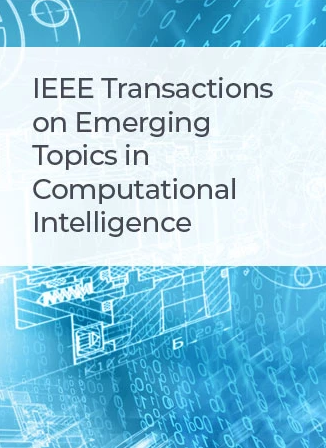Graph-Enabled Reinforcement Learning for Time Series Forecasting With Adaptive Intelligence
IF 5.3
3区 计算机科学
Q1 COMPUTER SCIENCE, ARTIFICIAL INTELLIGENCE
IEEE Transactions on Emerging Topics in Computational Intelligence
Pub Date : 2024-03-15
DOI:10.1109/TETCI.2024.3398024
引用次数: 0
Abstract
Reinforcement learning (RL) is renowned for its proficiency in modeling sequential tasks and adaptively learning latent data patterns. Deep learning models have been extensively explored and adopted in regression and classification tasks. However, deep learning has limitations, such as the assumption of equally spaced and ordered data, and the inability to incorporate graph structure in time-series prediction. Graph Neural Network (GNN) can overcome these challenges by capturing the temporal dependencies in time-series data effectively. In this study, we propose a novel approach for predicting time-series data using GNN, augmented with Reinforcement Learning(GraphRL) for monitoring. GNNs explicitly integrate the graph structure of the data into the model, enabling them to naturally capture temporal dependencies. This approach facilitates more accurate predictions in complex temporal structures, as encountered in healthcare, traffic, and weather forecasting domains. We further enhance our GraphRL model's performance through fine-tuning with a Bayesian optimization technique. The proposed framework surpasses baseline models in time-series forecasting and monitoring. This study's contributions include introducing a novel GraphRL framework for time-series prediction and demonstrating GNNs' efficacy compared to traditional deep learning models, such as Recurrent Neural Networks (RNN) and Long Short-Term Memory Networks(LSTM). Overall, this study underscores the potential of GraphRL in yielding accurate and efficient predictions within dynamic RL environments.利用自适应智能进行时间序列预测的图形强化学习
强化学习(RL)因其在连续任务建模和自适应学习潜在数据模式方面的能力而闻名于世。深度学习模型在回归和分类任务中得到了广泛的探索和采用。然而,深度学习也有局限性,比如假设数据间距相等且有序,以及无法在时间序列预测中纳入图结构。图神经网络(GNN)可以有效捕捉时间序列数据中的时间依赖性,从而克服这些挑战。在本研究中,我们提出了一种使用 GNN 预测时间序列数据的新方法,并使用强化学习(GraphRL)进行监控。GNN 将数据的图结构明确地整合到模型中,使其能够自然地捕捉时间依赖关系。这种方法有助于在复杂的时间结构中进行更准确的预测,例如在医疗保健、交通和天气预报领域。通过贝叶斯优化技术进行微调,我们进一步提高了 GraphRL 模型的性能。所提出的框架在时间序列预测和监控方面超越了基准模型。本研究的贡献包括为时间序列预测引入了一个新颖的 GraphRL 框架,并展示了 GNN 与循环神经网络(RNN)和长短期记忆网络(LSTM)等传统深度学习模型相比的功效。总之,这项研究强调了 GraphRL 在动态 RL 环境中进行准确、高效预测的潜力。
本文章由计算机程序翻译,如有差异,请以英文原文为准。
求助全文
约1分钟内获得全文
求助全文
来源期刊

IEEE Transactions on Emerging Topics in Computational Intelligence
Mathematics-Control and Optimization
CiteScore
10.30
自引率
7.50%
发文量
147
期刊介绍:
The IEEE Transactions on Emerging Topics in Computational Intelligence (TETCI) publishes original articles on emerging aspects of computational intelligence, including theory, applications, and surveys.
TETCI is an electronics only publication. TETCI publishes six issues per year.
Authors are encouraged to submit manuscripts in any emerging topic in computational intelligence, especially nature-inspired computing topics not covered by other IEEE Computational Intelligence Society journals. A few such illustrative examples are glial cell networks, computational neuroscience, Brain Computer Interface, ambient intelligence, non-fuzzy computing with words, artificial life, cultural learning, artificial endocrine networks, social reasoning, artificial hormone networks, computational intelligence for the IoT and Smart-X technologies.
 求助内容:
求助内容: 应助结果提醒方式:
应助结果提醒方式:


